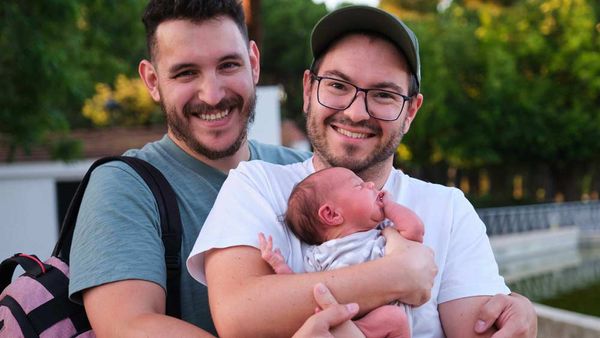New Study: Younger Gay Men Favoring Monogamy
A new study by San Francisco State University, "Younger Gay Men's Perspectives on Monogamy, Non-monogamy, and Marriage" describes a significant shift toward monogamy and away from 'open relationships.' Eighty-six percent of the coupled respondents (ages 18-39) reported being in monogamous relationships, as opposed to the 50 percent usually cited in prior research.
�
In addition to a shift toward monogamy, the Study reports that among younger gay men, marriage is definitely becoming the norm:� 92 percent of single gay men expect to marry.�Sixty-two percent responded that most of their coupled friends are married or likely to marry.�
�
Interestingly, only half of respondents equated marriage with monogamy, and non-monogamous couples were as likely to be married as monogamous couples.
�
The study is both quantitative (576 respondents) and qualitative (222 respondents).� It describes trends toward greater monogamy; the emergence of 'monogamish' relationships; and provides insights, profiles and descriptions of both monogamous as well as non-monogamous gay male couples.
�
Colleen Hoff, PhD., Director, Center for Research on Gender and Sexuality at San Francisco State University considers this study and the authors' previous study to be 'ground-breaking'.�"The work Lanz Lowen and Blake Spears are doing is providing important information and modeling about gay couples. The findings from their studies will end up supporting gay couples for generations." �
Other study findings:
In the qualitative part of the survey, 18 percent of coupled respondents identified as 'monogamist,' and described occasionally having three-ways along with their partner. 'Monogamish' is a term popularized by sex columnist Dan Savage -- he describes it as "mostly monogamous with a little squish around the edges."
Monogamous couples espoused the need to make monogamy a 'conscious choice.' They didn't consider it their only option and felt it required effort and communication.
Non-monogamy is still common in the gay community (6 percent identified as non-monogamous, in addition to the 18 percent identifying as 'monogamish'). Non-monogamy is more likely to be an agreement couples come to over time (In a previous study by the authors of long-term male couples in non-monogamous relationships, seven years was the average time before couples 'opened' their relationship).
Both monogamous and non-monogamous couples saw their relationships as healthy and stable (98 percent and 92 percent), satisfying (98 percent and 91 percent), and likely to continue for the next five years (98 percent and 86 percent). The myths that "it's impossible for gay men to stay true to a monogamous commitment" or that "non-monogamous relationships don't last" are clearly untrue. (In the previous study by the authors of long-term male couples in non-monogamous relationships, couples had been together an average of 16 years.)
Monogamous, monogamish and non-monogamous couples all emphasized the importance of honest communication.
Although 35 percent of non-monogamous couples cited 'jealousy' as a challenge, jealousy was also named by 25 percent of monogamous couples as an issue.
Both monogamous and non-monogamous couples felt misunderstood and unsupported by the larger gay community. Couples from both camps talked about the topic being "undiscussable" and the need for greater information.






